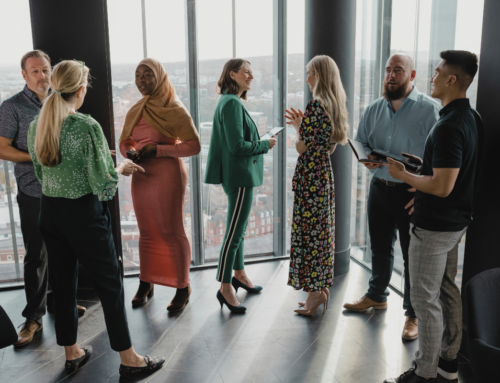Hybrid for humans: Designing workplaces for the future
The concept of hybrid working has recently gained significant attention, with its potential to redefine the traditional office environment. While many have touted it as the way forward, there is still much to be explored and understood about this new working model. In the recent Future Assistant Global Summit, Christopher Allen, Director at Montroc Consulting, shared his thoughts on Hybrid for humans: Designing workplaces for the future and discussed the importance of creating workspaces that cater to individuals’ diverse needs and preferences.
The evolution of hybrid working
The term “hybrid” has become a buzzword in workplace discussions, often used to describe the blend of remote and in-office work. However, it goes beyond mere convenience or flexibility. Hybrid working signifies a fundamental shift in where work happens, allowing individuals to choose their working location based on what best suits their tasks and preferences. The COVID-19 pandemic played a crucial role in accelerating the adoption of remote work and showcasing its efficiency. This period also highlighted the desire for a balance between working from home and the benefits of being in the office.
The human element
At the heart of the hybrid working discussion is the recognition of individuality and the diverse makeup of the workforce. Human beings come in various forms, with different needs, preferences, and backgrounds. It is essential for offices to reflect this beautiful and varied race. Historically, many offices were designed with a one-size-fits-all approach, catering mainly to white extroverted males. However, as workplaces evolve, it is crucial to acknowledge and accommodate every individual’s unique requirements.
Functionality and aesthetics:
Designing workspaces for a hybrid future involves considering both functionality and aesthetics. Functionality encompasses aspects such as ergonomics, privacy, and proximity. Ensuring that individuals are physically, mentally, and emotionally comfortable is vital.
Access to nature, known as biophilia, can significantly enhance well-being and productivity. Creating spaces that offer privacy while allowing for social interactions fosters a balanced work environment. Furthermore, aesthetics play an essential role in creating inspiring and beautiful workplaces that contribute to employees’ overall experience.
Understanding each other
To successfully navigate the hybrid working landscape, promoting understanding and empathy among colleagues is crucial. This requires delving into personal preferences, backgrounds, and circumstances. Learning about each other’s experiences during lockdown, and the aspects individuals want to retain, helps foster authentic connections. Establishing psychological safety and building trust between leaders, managers, and staff is essential. Understanding each other’s needs and embracing differences can lead to a more inclusive and harmonious work environment.
Designing workplaces for humans
When designing workspaces for the hybrid future, involving all stakeholders in the decision-making process is vital. Rather than relying solely on architects, designers, or real estate agents, gathering input from the entire workforce is crucial. This is where Assistants can add value. Understanding individual preferences, personal circumstances, and organisational culture is critical to creating an inclusive and productive workspace. Recognising the evolving needs of employees throughout their careers, considering factors like age, family responsibilities, and proximity to the office, helps tailor the office environment to suit diverse requirements.
Hybrid working has the potential to revolutionise the way we work, offering flexibility and opportunities for personal growth. However, to be successful, workplaces must adapt to accommodate the needs of all individuals. Organisations can create environments that promote well-being, productivity, and overall success by focusing on functionality, aesthetics, understanding, and inclusivity. Embracing the hybrid for humans approach will enable a future of work that caters to every individual’s unique and diverse qualities.





